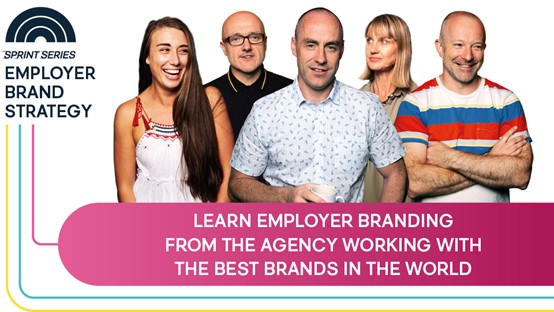Employer Brand isn’t about recruiting, it’s this…
2 min read.
The real value that you will get from your Employer Brand isn’t about recruitment. This is what it is really about….
It is easy to be fooled into thinking that the biggest ROI of Employer Branding comes from recruiting. But it doesn’t. Trying to find talent is just a lot more visible and tangible.
The real return on investment comes in reminding your existing talent why they’re part of your organization. That’s where the magic is created, experienced, and proved out.
In the current volatile business landscape keeping your best people is crucial to establishing or maintaining a competitive advantage. Losing your best people or, worse still, losing them to a competitor is a very expensive way to run your business.
The Society for Human Resource Management (SHRM) reported that on average it costs a company six to nine months of an employee's salary to replace him or her. For an employee making $60,000 per year, that equates to $30,000 - $45,000 in recruiting and training costs.
The cost of vacant positions
Not filling a role also has a cost. There is even a formula for working that out. If you take the total company revenue and divide it by the number of employees and then divide it by 365, it will give you the average daily revenue of an employee.
Take that figure and multiply it by the number of roles you need to fill and that’s how much revenue you are losing every day each role remains vacant.
So, pound for pound, would you rather make a new hire or discourage a known top performer from leaving?
It is common sense and, as you have already read, cheaper to keep your best people, which is the real role of a strong Employer Brand - to harmonise and galvanise your workforce.
An Employer Brand doesn’t pay for itself with every hire. If your EB has done its job and that person stays to produce great work for your organisation, that’s where the real ROI is. Recruitment is just the start of the process.
If you bring people in and they decide that they don't want to play for the team, and leave after 100 days, because what you promised isn't the reality, then what you were just calling a success, and high fiving over, is actually an expensive waste of time.
Measuring Employer Brand success
It is not easy to measure what it is that you're calling a success. Is it that they accept the job and start working? Is that really all? That’s not the kind of success that will push your company forward.
Better to consider whether they stay. Do they like it? Can they thrive? Are they productive? Those are the things that matter.
So, well done for hitting your recruitment quota, but success is not one metric and as such it might be slightly more challenging to measure.
Even retention isn't enough. We’ve heard plenty about so-called ‘Quiet Quitting’ recently, when employees stay in a role but produce only the minimum required to keep it. They must be properly engaged and contributing their best work and their best efforts otherwise they are not helping your business and are not successful hires.
If your Employer Brand is effective, then it will already have set their expectations so that they find that elusive impact and belonging that we all seek and will be happy in their role.
The day they agree to work for you, or the day they start the job, the company still isn't any better off. You still don't know whether they're going to do well, and you don't know whether they're going to add value to the business or if they're going to find job satisfaction.
The real value of recruitment is getting people that enjoy their role, thrive at it, add value to the business and find purpose in their life. You only get that with employee engagement and the Employer Brand doing its work internally.
So, if not recruitment numbers, what should you measure?
It is about regrettable loss and retention rates, but also employee experience. Examine whether productivity goes up at the same time as employee satisfaction.
Net Promoter Score is an obvious metric to measure. Have referrals gone up? People recommending you as an employer and their role specifically, is an obvious sign that people actually like working at your organisation.
Alumni experience is also important. What people say about your company after they leave can be a potent attractor or a repellent. Social media engagement is also a good indicator. If they are contributing and reacting positively to the content you generate, they are engaged.
Ultimately, choose the measurements that are aligned to your stated business objectives. Hitting those marks will achieve your greatest ROI.

